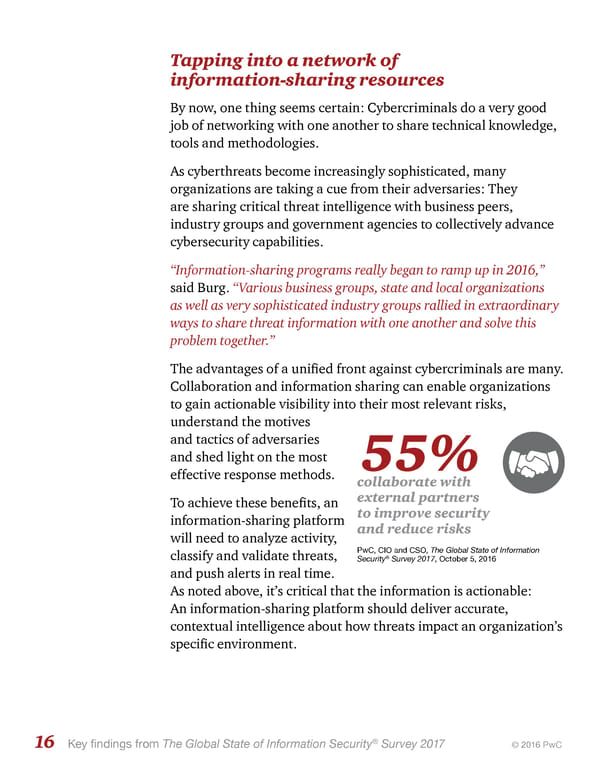Tapping into a network of information-sharing resources By now, one thing seems certain: Cybercriminals do a very good job of networking with one another to share technical knowledge, tools and methodologies. As cyberthreats become increasingly sophisticated, many organizations are taking a cue from their adversaries: They are sharing critical threat intelligence with business peers, industry groups and government agencies to collectively advance cybersecurity capabilities. “Information-sharing programs really began to ramp up in 2016,” said Burg. “Various business groups, state and local organizations as well as very sophisticated industry groups rallied in extraordinary ways to share threat information with one another and solve this problem together .” The advantages of a unified front against cybercriminals are many. Collaboration and information sharing can enable organizations to gain actionable visibility into their most relevant risks, understand the motives and tactics of adversaries and shed light on the most 55% effective response methods. collaborate with To achieve these benefits, an external partners information-sharing platform to improve security will need to analyze activity, and reduce risks PwC, CIO and CSO, The Global State of Information classify and validate threats, ® Security Survey 2017, October 5, 2016 and push alerts in real time. As noted above, it’s critical that the information is actionable: An information-sharing platform should deliver accurate, contextual intelligence about how threats impact an organization’s specific environment. 16 Key findings from The Global State of Information Security® Survey 2017 © 2016 PwC
 Toward new possibilities in threat management Page 16 Page 18
Toward new possibilities in threat management Page 16 Page 18